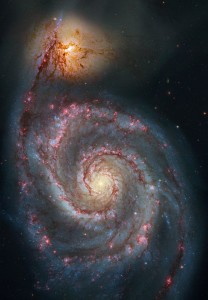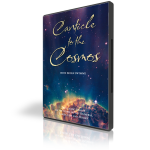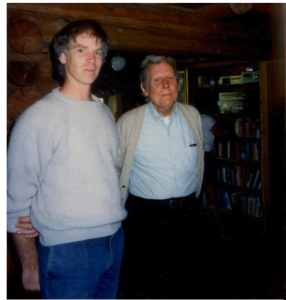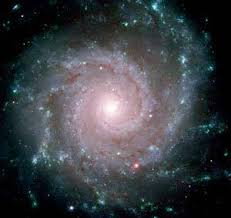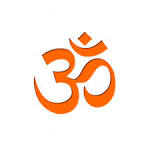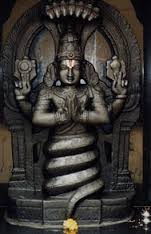The awakening process is fascinating, to say the least. Never what we might have imagined. Way too complex for that, and the infinite is beyond even imagination. But if there is a constant lesson, it is that awakening requires continuous growth, on as many levels as possible. These include emotionally, spiritually and in the field of expertise used by your soul to contribute to the evolution of the the planet. Another word for growth is integration where new skills and insights continue to feed a deepening complexity in our abilities to sense and respond to our world, as individuals, as communities, and as the human species discovering its place in the great stream of life.
Emotional Awakening
It would be easy argument to say that emotional growth is the most important of them all, as it is the realm of emotional confusion and dysfunction that creates all of the damage and destruction we witness daily here on Mother Earth. And it is easy to do a spiritual bypass where you throw your self so completely into your spiritual practice that you avoid or deny the shadow side of your unconscious. These emotionally traumatized parts of yourself that desperately need to be healed, but are so painful that denial seems a better option, contribute to create suffering for self and others. Communities as well as individuals can suffer from the spiritual by-pass syndrome. All the asana or meditation in the world is not going to help grow the emotional body the way therapy and a relational-field-based inter-personal spiritual exploration will.
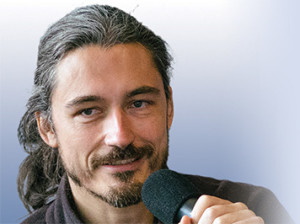 “The internalization of our spiritual practice and the embodiment of a higher consciousness is not expressed in the experimental bubble of retreat centers, but in challenging life situations, in the marketplace, when deployed in areas of crisis, and in the confrontation with poverty, illness and conflicts.” ~ Thomas Hübl
“The internalization of our spiritual practice and the embodiment of a higher consciousness is not expressed in the experimental bubble of retreat centers, but in challenging life situations, in the marketplace, when deployed in areas of crisis, and in the confrontation with poverty, illness and conflicts.” ~ Thomas Hübl
Thomas Hübl is a contemporary spiritual teacher who deeply engages the emotional-relational aspect of ourselves while grounding this in the “Infinite Absolute” of spirit. He brings a mystical fire to his teachings that stems from his own continuous growth and practice in developing a collective planetary and cosmic consciousness. Thomas lives at the ‘field’ level of consciousness, where in his teachings, he connects his students to the ‘relational fields’ and the ‘collective field of information’ ever available to us if we can learn how to access it. He also uses sound in the form of solo or group ‘toning’ to generate sonic fields of coherence and healing. If you want to travel in the fast lane of growth and awakening, hitch your wagon to Thomas.
Spiritual Awakening
Spiritual awakening is the ‘realization’ that my fundamental essence, the ‘I am’, is ‘Infinite-Absolute-Stillness’, the ‘drashtuh svarupe’ of Yoga Sutra I-3. Spiritual growth is learning to rest in, and gradually stabilizing your presence here, (avasthanam), independent of whatever may be happening at any of the levels of the world of form. In the previous post the term ‘turiya’ was introduced by my dream guru, 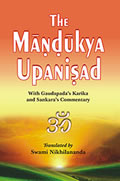 Robert Moss, to describe this universal presence. His quote was taken from the Spanda Karikas, a sacred text of Kashmiri Shavism and here I would like to present the root source of ‘turiya’, the Mandukya Upanishad. This is the shortest of the Upanishads, the Vedic texts that, along with the Bhagavad Gita and the Brahma Sutras, constitute the basis of Vedanta philosophy. In the twelve verses of the Mandukya Upanishad, unique in the Upanishads for having no imagery, dialogue, rituals or tangible forms of worship, the individual and universal expressions of ‘Infinite-Absolute-Stillness’, Atman and Brahman are presented and equated. They are one in the same. Atman is turiya is Brahman, tat tvam asi.
Robert Moss, to describe this universal presence. His quote was taken from the Spanda Karikas, a sacred text of Kashmiri Shavism and here I would like to present the root source of ‘turiya’, the Mandukya Upanishad. This is the shortest of the Upanishads, the Vedic texts that, along with the Bhagavad Gita and the Brahma Sutras, constitute the basis of Vedanta philosophy. In the twelve verses of the Mandukya Upanishad, unique in the Upanishads for having no imagery, dialogue, rituals or tangible forms of worship, the individual and universal expressions of ‘Infinite-Absolute-Stillness’, Atman and Brahman are presented and equated. They are one in the same. Atman is turiya is Brahman, tat tvam asi.
The four states of consciousness, waking, dreaming, deep sleep and turiya (which is not a state, but the root source of the other three!), are related to OM, or AUM as it is spelled out in Sanskrit. A is the waking state, U the dreaming, M the deep sleep, and the silence as M dissolves is turiya. Thus the mantra OM designates both Atman and Brahman. Yoga Sutras I-27 – I-29 also discuss this.
Soul Awakening
What is ‘Soul? In a series of previous blogs beginning here I wrote about aspects of soulness. Here we will use soul to describe the unique history, creative gifts and challenges we bring to this incarnation. As such, awakening and growing the soul requires the ability to ask deep questions about our choices in life. Following someone else’s script or living someone else’s life does not nourish the soul. So the first question asked by the soul is this. “Have I given away my power to a leader, or group who claim authority?” It is easier, on a simple level, to let others have the responsibility, especially when there is a large group buying into the scene and enjoying the power. However, in the long run the soul suffers and the collective stagnates at best. A group that stifles individual creative expression cannot grow in any meaningful way. This is true in the corporate world, the artistic world and in spiritual and religious communities.
 The next question the soul asks is ” can I let go of what I know, and especially what I think I know, and rest in ‘not-knowing’? Suzuki Roshi’s classic, “Zen Mind, Beginner’s Mind” addresses this question head on. His opening line states:
The next question the soul asks is ” can I let go of what I know, and especially what I think I know, and rest in ‘not-knowing’? Suzuki Roshi’s classic, “Zen Mind, Beginner’s Mind” addresses this question head on. His opening line states:
“In the beginner’s mind there are many possibilities, but in the expert’s there are few.”
First, you cannot hold onto the ‘Truth’, but you can rest in it, if you let go, (see Yoga Sutras I-23 – I-29). Secondly, you will find that letting go of stuff doesn’t mean it goes away. It just floats there, and if you need it you can pick it up and use it, and if you realize it no longer serves you, than you leave it be. This is challenging for those with years of experience in a  subject. The history of science is filled with examples of major breakthroughs and insights that were ridiculed and rejected by ‘establishment scientists that were stuck on their own limited vision. Beginner’s mind was not included in their curriculum.
subject. The history of science is filled with examples of major breakthroughs and insights that were ridiculed and rejected by ‘establishment scientists that were stuck on their own limited vision. Beginner’s mind was not included in their curriculum.
My own yoga practice has continuously been overhauled, sometimes painfully so, by insights previously un-imagined, and discovered outside the ‘yoga world’. That which is of value returns again and again, so it is not a matter of re-inventing the wheel, but of expanding our view, our horizon, the magnitude of our vision. The collective vision is extraordinarily rich, but we have to step outside of our comfort zone to see with new eyes. My own understanding of Iyengar’s practice and depth of knowledge of yoga, which is fundamentally my own soul path, has been greatly enhanced by the creative insights of explorers in other realms of somatics and spiritual practices.
Of course, the egoic structures of the mind do not like change, insecurity, not knowing, being a beginner, so stirring the soul is not always pleasant. This is why new resources of support can be very helpful. As we gain more ground in the shamanic realms and other levels of non local reality, we discover a support system used by shamans and dream travelers for millenia. As a collective, we humans are total beginners here, but our historical moment is primed for a rapid expansion of sensitivity, insight and integration, if we can summon up the patience and courage to plunge into this infinite mystery. The world we are creating begins here, and right now collective unconscious fears are driving the agendas of the political and economic powers. We can change this, now. To re-quote Thomas Hubl,
“The internalization of our spiritual practice and the embodiment of a higher consciousness is not expressed in the experimental bubble of retreat centers, but in challenging life situations, in the marketplace, when deployed in areas of crisis, and in the confrontation with poverty, illness and conflicts.”


